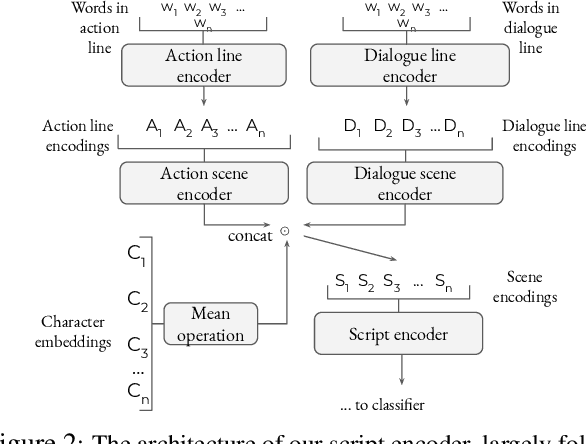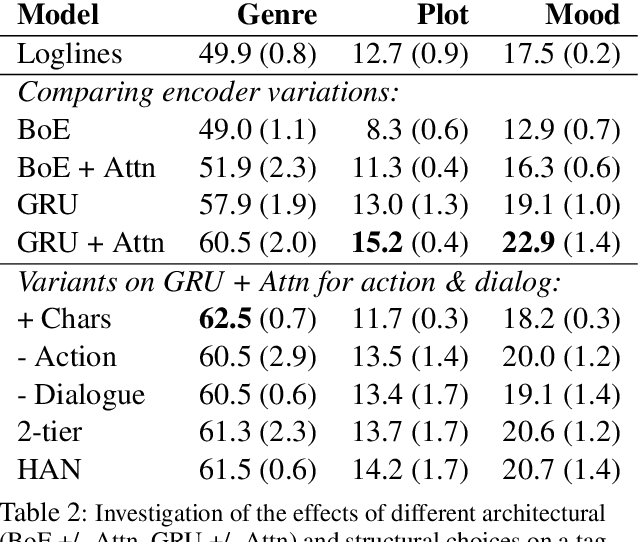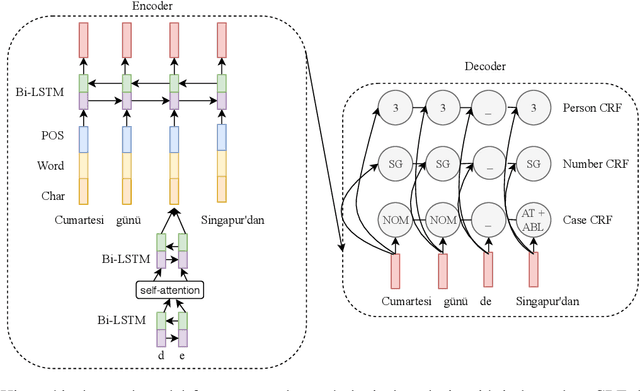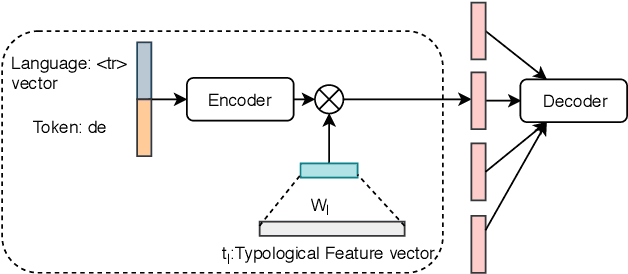Gayatri Bhat
Hierarchical Encoders for Modeling and Interpreting Screenplays
Apr 30, 2020



Abstract:While natural language understanding of long-form documents is still an open challenge, such documents often contain structural information that can inform the design of models for encoding them. Movie scripts are an example of such richly structured text - scripts are segmented into scenes, which are further decomposed into dialogue and descriptive components. In this work, we propose a neural architecture for encoding this structure, which performs robustly on a pair of multi-label tag classification datasets, without the need for handcrafted features. We add a layer of insight by augmenting an unsupervised "interpretability" module to the encoder, allowing for the extraction and visualization of narrative trajectories. Though this work specifically tackles screenplays, we discuss how the underlying approach can be generalized to a range of structured documents.
CMU-01 at the SIGMORPHON 2019 Shared Task on Crosslinguality and Context in Morphology
Jul 23, 2019



Abstract:This paper presents the submission by the CMU-01 team to the SIGMORPHON 2019 task 2 of Morphological Analysis and Lemmatization in Context. This task requires us to produce the lemma and morpho-syntactic description of each token in a sequence, for 107 treebanks. We approach this task with a hierarchical neural conditional random field (CRF) model which predicts each coarse-grained feature (eg. POS, Case, etc.) independently. However, most treebanks are under-resourced, thus making it challenging to train deep neural models for them. Hence, we propose a multi-lingual transfer training regime where we transfer from multiple related languages that share similar typology.
Grammatical Constraints on Intra-sentential Code-Switching: From Theories to Working Models
Dec 14, 2016



Abstract:We make one of the first attempts to build working models for intra-sentential code-switching based on the Equivalence-Constraint (Poplack 1980) and Matrix-Language (Myers-Scotton 1993) theories. We conduct a detailed theoretical analysis, and a small-scale empirical study of the two models for Hindi-English CS. Our analyses show that the models are neither sound nor complete. Taking insights from the errors made by the models, we propose a new model that combines features of both the theories.
 Add to Chrome
Add to Chrome Add to Firefox
Add to Firefox Add to Edge
Add to Edge